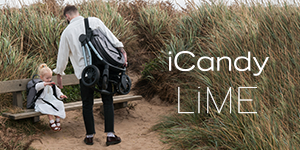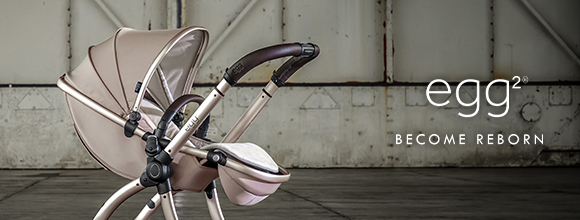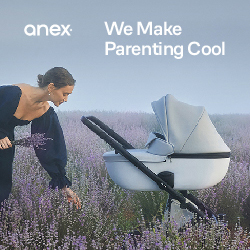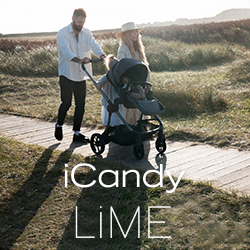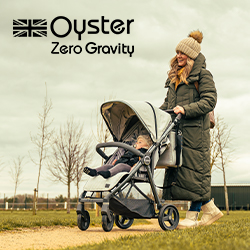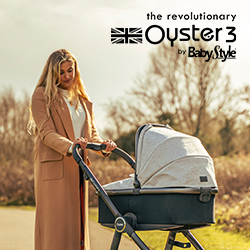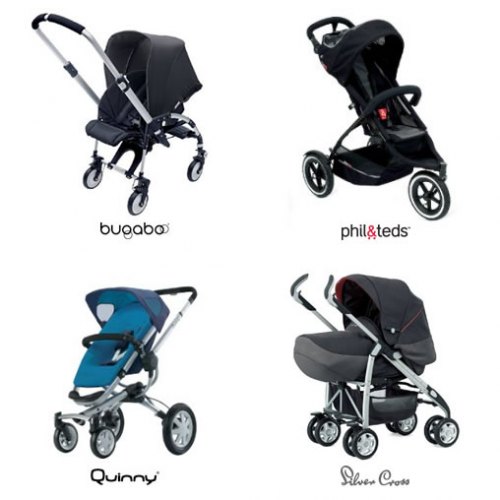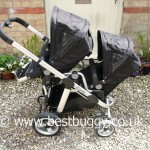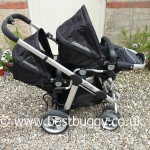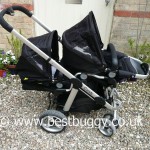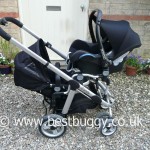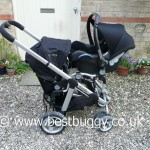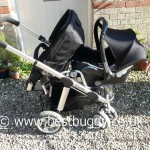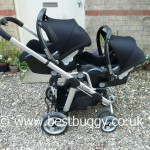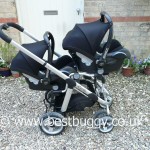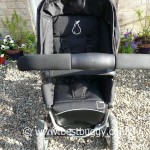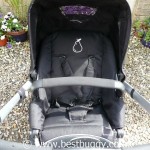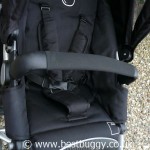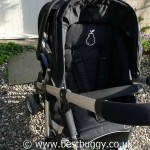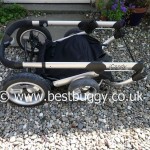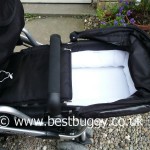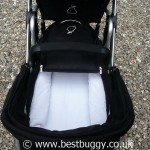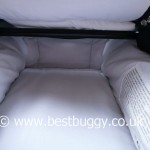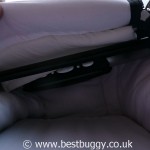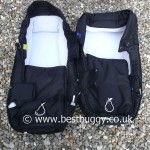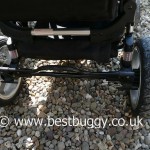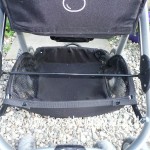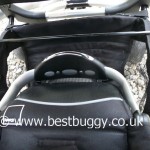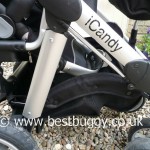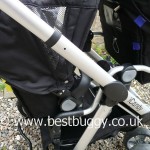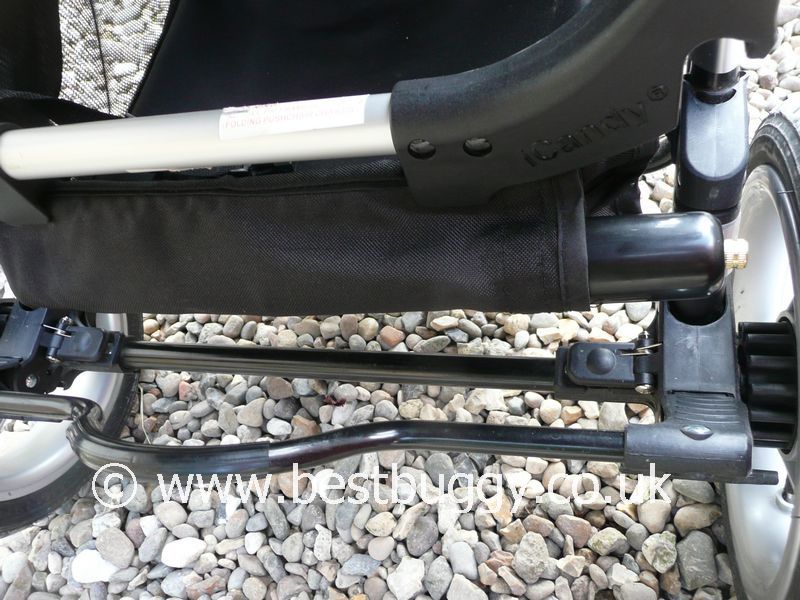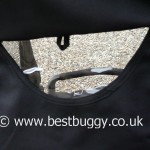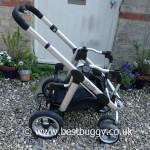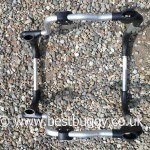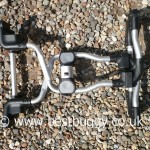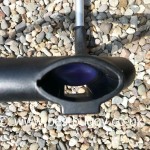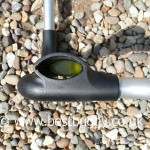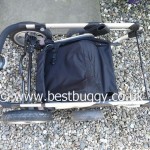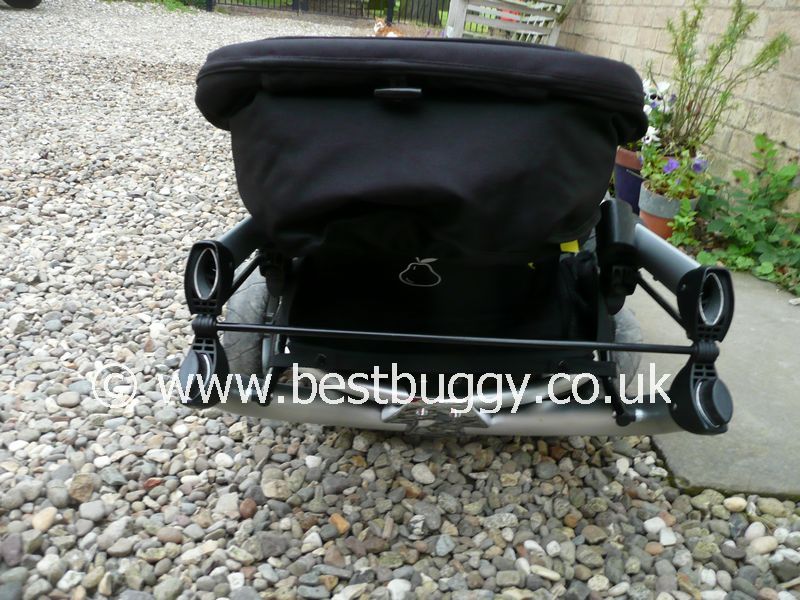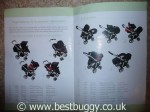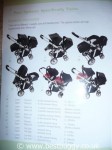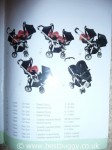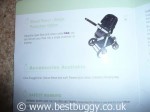iCandy Pear Review & Photoset
This set of photographs is designed to complement the set of photos on the main statistics page. They are designed to show additional features and seating positions to those already shown.
The iCandy Pear has over 20 different seating combinations of single, toddler and baby or twin modes using combinations of seat units, car seats and carrycots. This makes the iCandy Pear a very attractive option. However there are also limitations and I want to talk you through some of the pros and cons of the Pear.
The iCandy Pear is basically a single sized chassis, with double chunky wheels at the front. There are two ways to buy a Pear. It comes complete as a Pear or it is possible to upgrade an iCandy Apple to make a Pear ie from a single pushchair into a double. This does involve exchanging the Apple wheels for the Pear wheels plus adding the extra Pear components. The Pear can therefore be used as a single or a double pushchair.
The iCandy Pear chassis itself looks great. It is neat and smart with a good sized basket. However in Double Pear mode (From here we will talk about the Pear as a double pushchair), the basket is almost inaccessible. We mananged to post a magazine underneath the seats but that was about it. The empty Pear is heavy to push, and I know this put me off buying one. However with children in the seats, the pushability is amazingly good – I was actually very shocked to find it was as easy to push as the Peach!! But there is one major issue that I came up against. The Pear pushes beautifully when moving. It manoeuvres beautifully around corners whilst moving. But if you stop at any sort of angle from the straight (as I continually do when shopping), the wheels on the Pear stick and it is really really really hard to get them turned back round to straight so that you can get moving again. The first time it happened I wondered what was up, but by the tenth time on one short shopping / school fair outing, I was getting pretty fed up. By the end of the outing, I had locked the wheels in annoyance which made the Pear extra hard to manoeuvre. I did give the Pear the benefit of the doubt that maybe the wheels needed servicing, but I asked around and this is a common complaint. But to be fair, it is also an issue on several other pushchairs that I have tested but all of those have larger wheels at the front.
The iCandy Pear seats are a generous size. I have heard people say how small they are, but to be honest, with two siblings of different ages, it was no problem to put the older child into the larger blue seat unit and the smaller child into the smaller yellow seat unit. Even when I swapped the children around, although the elder had her head on the hood fabric, she said she was fine. The difference between the two seats is not much. Width wise there was lots of room for both children. The seats were also comfortable and well padded. There are additional flavour comfort packs available to give a splash of colour. The footrest was brilliant. It was a good depth for my daughter to put her feet on, and there were lots of positions that the footrest could be placed in. I loved that if my daughter wanted to dangle her feet that the footrest could be tucked right underneath. The bumper bars are great although not hinged. They require two hands to fix in place.
The upgrade pack from an Apple to Pear contains the large front wheel kit, pip converter frame, 2 x seat units and 2 x raincovers. The carrycots are to order separately. The blue one is larger than the yellow one and will therefore last longer. A child under two will easily fit in the yellow seat for six months and the blue carrycot will give you a parent facing option for the baby, however the toddler is hidden behind the carrycot. However if you buy a yellow carrycot then in many ways the seating positions for the toddler are better. Both children HAVE to face the same direction.
- If baby has the blue carrycot they can parent face whilst the toddler parent faces behind (with the hood of the carrycot down you should be able to see the toddler), or with the pip convertor turned round, the toddler can sit at the back nearest you looking outwards so you can chat, with baby facing outwards at the front.
- If baby has the yellow carrycot then the toddler can see out at the front whilst you can see baby from above facing the front too. Or conversely the toddler faces you so you can chat and the baby is at the front behind the toddler where you can’t see them.
Both options have compromises!
The carrycots are pieces of fabric which you use to convert the seat frame into a carrycot. There are lots of zips to do up when converting the seat units but it is easy enough. The carrycots however are fairly shallow. There is no real form to the carrycots and they ‘sink’ slightly when they are put on the ground. They are really a compromise rather than a proper carrycot. I understand the carrycots are small and babies do grow out of them before six months old. However the two biggest grumbles are again because of how the carrycot is constructed. Inside the carrycot, the footrest has to poke through at the end. This leaves a small gap for rain or wind to get through. But a bigger issue is the footrest bar which goes through the carrycot at the top ie above the baby’s feet. I have heard of babies kicking this hard, or their feet getting rubbed on it. I have taken a photo to show this. The zip on the top of the carrycots is very fiddly to do which could get annoying if you are undoing it each time to get a baby in and out.
The seats are mounted onto the Pip Convertor. This is a square-ish shaped frame which unfolds and fits onto the chassis. This can be put in two ways, but it is vital to check the pip convertor is sat correctly whichever way you choose to put it. It is easy to miss the chassis bars it sits on. The pip convertor has two sets of sockets, one labelled with blue inside, and one with yellow inside (see photos). These correspond to the different components which either fit the blue socket or the yellow socket only. So there is a blue seat, a blue carrycot, and a blue car seat adaptor and the same in yellow. The blue seat and carrycot are larger than the yellow ones. It is important to note that the blue seat always goes in the upper position, and the yellow seat always goes in the lower position. I have heard several retailers say that they sell lots of Pears because of the parent facing seat, but in reality, you can only see one child. The other is completely stuck behind the other! As one of this photoset shows, even if you step well to one side of the handlebar, you still are unable to see the rear child!
I do have a major issue with the harnesses – they are huge….they were too big for my two year old, never mind my 12 month old, even when tightened to the maximum. Harnesses are there for safety purposes, and I personally like my children to be strapped in reasonably tightly so that I know they can’t climb out, and also if the pushchair tipped (as I have seen happen) the children won’t fly out. There are no choice of height settings either. I would be very concerned about putting a 6 month old in the seat and in the end I did add an additional harness to the Pear for my baby because I was not happy with the Pear harness being so large. (*EDIT* We believe the harnesses are smaller on the newer Pear pushchairs, but please check).
The seats each sit upright and then have two recline settings; on part recline and the other reclines to flat. I found reclining my children was no problem, but trying to sit each of them upright was hard, and proved impossible with my daughter’s weight in the seat. I had to extract her from between the seat units and her feet got stuck between the seats. It wasn’t good. Meanwhile my baby managed to get his foot stuck in part of the top of the pip convertor and cried because he couldn’t get it out!!! I can’t say I was happy at these safety issues. However generally, unlike another leading tandem, there is no need to alter the footrests depending on what position the seats are in.
The hoods to be honest were poor. Compared to the wonderful large Peach hoods, the Pear hoods are very shallow. I can’t tell you how many times I tugged at the Pear hood to try and pull it further forwards to give my children more sun protection, only for the hood to come off at the back and then I had to faff around putting it back on again!! There is no height settings for the hood. They are fixed in one position, or can be removed.
In car seat mode I love the way two car seats can face each other, as well as them both being able to face outwards or parent facing. The car seats clip on using adaptors – straight ones for the blue seat position and curved ones for the yellow position. A car seat can face in either direction on the blue adaptor. Again there are compromises to be made in toddler and baby mode with one child probably being hidden. But the car seat option is an excellent one, and I have heard of people buying a Pear simply to be able to manage to get their twins to and from the car. It is one of the few tandems that will take two car seats.
The Pear can also be used as a single. However in single mode the Pear only parent faces. There is an option to make the Pear outward facing which involves a screwdriver and rotating the connectors under the seat unit, but then the seat only outward faces! Rotating the connectors should only be done in single mode and never in double mode.
The brake is easy to use. The Pear has two air tyres at the back, and a small pump is held in a handy fabric pocket at the back of the basket just in case it is ever required. The foam covered handle goes from very low to very high – the handle is longer than the Peach one. The seats are very easy to pop off to remove. I found the chassis easy to fold, but I have heard of people having difficulties. The fold is a two stage one, first press a button on the side, then squeeze the lever whilst pushing along the line of the handlebar ie at an angle towards the floor. Secondly, listen for the double click and then rotate the handle downwards and the front wheels tuck underneath. The chassis is fairly compact when folded. The seats apparently stack ie the yellow seat inside the blue seat, but this requires removing the bumper bar to do so.
All round, although there may seem a lot of negatives here, but the iCandy Pear is a very short, neat tandem, and because of this small package there are compromises. Personally, I could and would have lived with every issue listed here because the Pear was a good tandem with great options – it is a small neat tandem which pushed well and felt easy to push with two older children on board. However the one issue I simply could not live with was the sticking wheels. I need a responsive pushchair, not one I get frustrated with every time I stop and try to restart. Maybe I should have got the pushchair serviced, and will give it the benefit of the doubt? But for this reason only, I sold the Pear on and am massively appreciating the responsive, easy to push and simple to manoeuvre iCandy Peach Blossom.
*EDIT*
Just a note to say, please do not confuse the old Pear (above) with the new Apple2Pear. There is absolutely no comparison between the way the Pear and the Apple2Pear handle. Please read our review of the new iCandy Apple2Pear and find out how brilliant it is to use, push, steer and fold!
- iCandy Fun Video - All Strollers
- iCandy Pear v's Kolcraft Contours
- Baby Jogger City Select v's iCandy Pear
- iCandy Pear v's iCandy Peach Blossom 2012
- iCandy Pear with Children
- iCandy Pear Review & Photoset
- iCandy Peach Blossom 2 & iCandy Pear & Kolcraft Contours & Baby Jogger City Select
- iCandy Pear double photos by Theresa
- iCandy Pear Video
- iCandy Pear
- iCandy Pear Review by Leah
